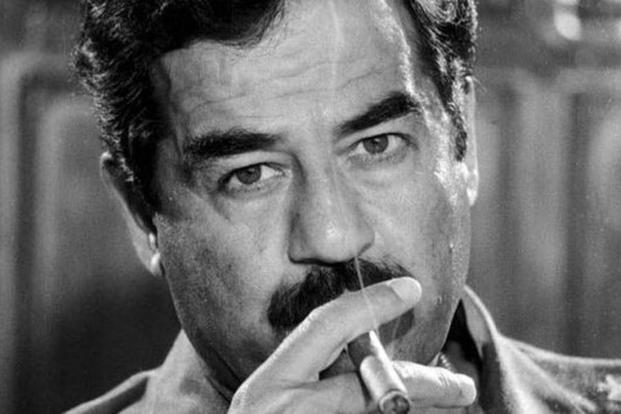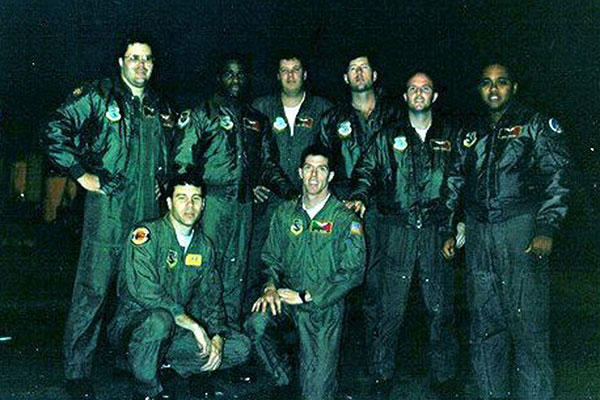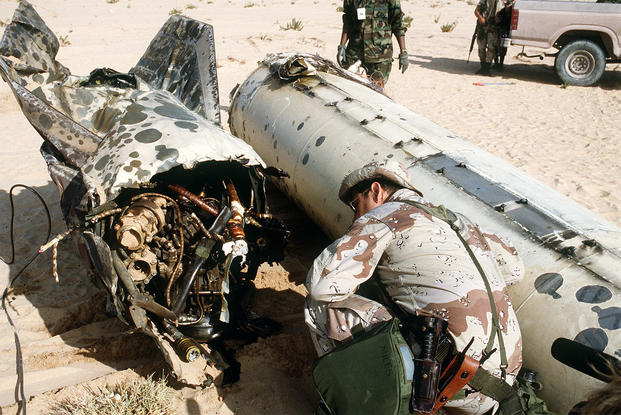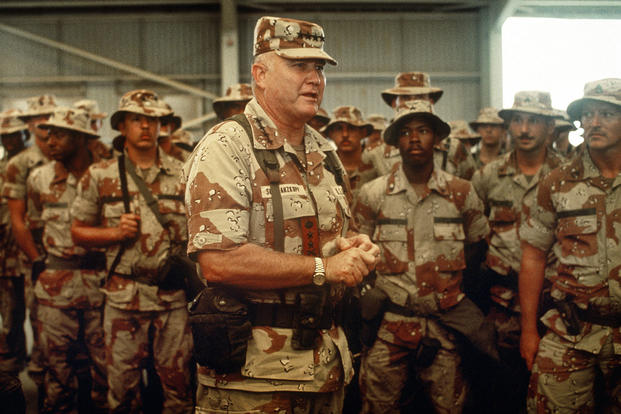The Gulf War (1990-91) was a conflict involving coalition forces from 35 nations, led by the United States, against Iraq. It was sparked by Iraq's invasion and annexation of Kuwait. The war unfolded in two key phases: Operation Desert Shield, which focused on troop deployment and defending Saudi Arabia, and Operation Desert Storm, the active combat phase.
Nowadays when people think of Iraq, they think of the war that began in 2003, ISIS and the long fight against terrorism. But the U.S. military's first major conflict with the country came more than a decade before that -- more than 25 years ago, in fact.
Operation Desert Storm began Jan. 17, 1991, after Iraqi forces who had invaded neighboring Kuwait refused to withdraw. The conflict is now commonly known as the Gulf War.
Here are six important facts you should know about it.

The War Was Pretty Short
From start to finish, Desert Storm only lasted 43 days, from Jan. 17 to Feb. 28, 1991. In fact, the land campaign is infamously known as the "100-hour ground war" for obvious reasons -- that's about as long as it lasted.

Why It Happened
After the Iran-Iraq War of the 1980s, Iraq was in debt to Kuwait and the United Arab Emirates, which had financed its war efforts. Iraqi President Saddam Hussein insisted both countries cancel that debt, because he felt they owed him for protecting them against Iran. Both countries refused, however, so Hussein threatened Kuwait, its oil-rich, militarily weak neighbor, reigniting a decades-old border dispute over Kuwait itself.
In July 1990, Saddam claimed that Kuwait and the UAE were overproducing crude oil, driving down prices and depriving Iraq of critical oil revenues. He accused Kuwait of stealing from an oil field on the Iraq-Kuwait border, and he accused the U.S. and Israel of encouraging Kuwait to lower its oil prices.
Relations deteriorated with all parties, which led to Hussein invading and annexing Kuwait in August 1990.The United Nations Security Council placed an embargo and sanctions on Iraq, but months later, when Hussein refused to comply with a resolution requiring him to withdraw, Desert Storm began.

The 'Coalition of the Willing' Was an Extraordinary Partnership
Before the invasion, 40 countries quickly entered into a nonbinding alliance against Iraq. The "Coalition of the Willing" included NATO allies, several Arab nations and -- most importantly -- several former Cold War adversaries, including the Soviet Union. The Cold War had thawed the year before the invasion, which helped ease U.S. and United Kingdom security concerns and ensured near global unity in opposition to Iraqi aggression.
Also, for the first time, a U.S. Central Command commander, Army Gen. "Stormin'" Norman Schwarzkopf, teamed with a regional ally, Saudi Arabia's Prince Khaled bin Sultan, to co-command the allied forces. Saudi Arabia was where U.S. land forces gathered during the buildup to Desert Storm, so the collaboration was an important dynamic and integral to the operation's overall success.

Classified 'Secret Squirrel' Mission Makes History
Desert Storm started as an air campaign with Operation Senior Surprise, which became known as "Secret Squirrel." Seven B-52G Stratofortresses left Barksdale Air Force Base, Louisiana, and flew 14,000 round-trip miles to, for the first time, launch 35 conventional air-launched cruise missiles at strategic Iraqi targets. It was the longest aircraft combat sortie of its time.

Iraq's Scud Missiles Were Meant to Split the Coalition
Hussein realized he couldn't defeat the military forces and international political will represented by the coalition, so his only option was to try to divide it. In retaliation for Secret Squirrel, Iraq launched Scud missiles at Israel and Saudi Arabia.
Hussein's hope was that Israel would retaliate, as it historically had, with military force -- a move that would have transformed the fight into yet another Arab-Israeli conflict. But Israel resisted as the U.S. promised to help protect it.
The MIM-104C Patriot missile detects, targets and detonates near incoming ballistic missiles to disable or destroy them. It had been under development since the 1960s, but its first successful use in combat was during Desert Storm.
The first Patriot missile intercepted a Scud launched over Dhahran, Saudi Arabia, on Day 1 of the conflict. Two days later, President George H.W. Bush sent two Patriot air defense missile batteries to Israel, marking the first time U.S. Army crews had ever been sent to help with that country's defense (and, as stated above, helping to keep the coalition together).
The Patriot missile system intercepted many Scuds over the course of Desert Storm, making major contributions to the success of the operation. It's still a key defense platform for U.S. forces today.

The War's Enduring Impact
While Desert Storm has largely been overshadowed by the more recent Iraq War and the current crisis with ISIS, the impact and relevance remain. About 697,000 U.S. troops took part in the war; 299 lost their lives.
The U.S. is still in good standing with many of the countries involved in the Coalition of the Willing today, and we can only hope those relationships -- however fragile -- continue to flourish into the future.
Stay on Top of Your Veteran Benefits
Military benefits are always changing. Keep up with everything from pay to health care by subscribing to Military.com, and get access to up-to-date pay charts and more with all latest benefits delivered straight to your inbox.















